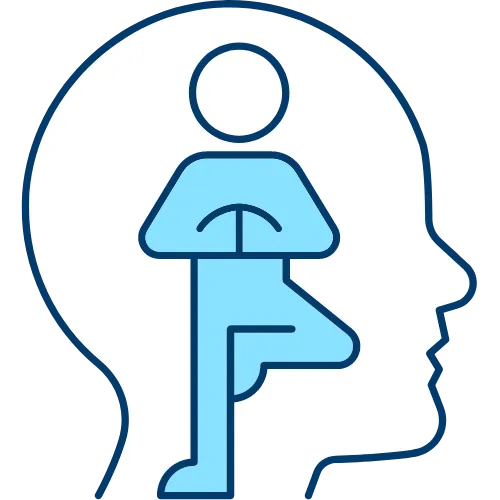
Transform Your Teen's Life with Our Specialized Hypnotherapy Program
Empower Your Teen to Overcome Challenges and Thrive: A Holistic Approach to Mental Health and Personal Growth
Laurie Roper
The Transformation

Initial Consultation and Customized Planning
Begin with a complimentary 20-minute session to discuss your concerns and goals. This initial meeting allows for a personalized assessment of your teen's unique challenges.
Based on this, a tailored hypnotherapy plan is crafted, focusing on key areas such as anxiety, depression, time management, and self-esteem.

Targeted Hypnotherapy and Mindset Shifts
Engage in specialized hypnotherapy sessions that utilize advanced techniques to reprogram the subconscious mind and implement neuroplasticity exercises.
These sessions aim to directly address and transform the root causes of your teen's struggles, rewiring their brain for more positive behavior patterns and emotional responses.

Integration and Continued Support
Support your teen in integrating the changes using practical tools such as mindfulness techniques, audio tapes, and notebook exercises. These are designed to reinforce the new positive mental frameworks established during therapy.
Parents are encouraged to participate in this phase to help maintain the transformation, ensuring it translates into everyday life and contributes to long-term well-being.
Benefits
Discover how our targeted hypnotherapy sessions can transform your teen's mental health and academic performance. Experience the lasting impact of enhanced emotional regulation, boosted self-esteem, and strengthened family bonds.

Family Healing and Involvement

Long-Term Coping Strategies

Boosted Self-Esteem

Rapid Resolution

Improved Academic Performance

Enhanced Emotional Regulation
Benefits
Discover how our targeted hypnotherapy sessions can transform your teen's mental health and academic performance. Experience the lasting impact of enhanced emotional regulation, boosted self-esteem, and strengthened family bonds.

Family Healing and Involvement

Long-Term Coping Strategies

Boosted Self-Esteem

Rapid Resolution

Improved Academic Performance

Enhanced Emotional Regulation
ABOUT

Laurie Roper is an experienced hypnotherapist and educator specializing in brain balancing and journaling techniques to alter negative belief systems and heal past traumas. With over 25 years as a certified teacher and family coach in diverse cities like NYC, London, and Phoenix, Laurie has honed her ability to address the unique challenges faced by teens and their parents.
Her workshops, including 'Cognition Ignition' and 'Stress Management Modalities', have empowered educators and psychologists across various districts. Now based in Asheville, NC, Laurie continues to dedicate her life to healing and teaching, guiding her clients towards emotional and cognitive well-being. Connect with Laurie to discover how you can transform your subconscious mind and embrace a healthier life.
Free 20 minute Consultation
We’ll discuss your reasons for requesting a session and your child’s challenge(s) and how I can help. I will ask what you are looking to accomplish in this type of therapy and the goals you have moving forward. You can see where to request a free consultation on the site.
You’ll probably have questions and I will elaborate on how the process of hypnotherapy can release emotional, physical and spiritual pain. You may know you do not sleep during hypnosis. You are just in a state of relaxation and at the same time mentally alert. Then, your subconscious mind is most receptive to hypnotic suggestion.
I would wake you up if you fell asleep because hypnosis won’t work if you can’t hear the suggestions and respond to them. It’s more of an in between sleep and an awakened state.
PLANS & PRICING
Understanding through my experience that parents/guardians are an integral part of the healing process, I decided to create what I consider an economically feasible package and I wanted this to be affordable.
$100
SINGLE SESSION
It’s common to require a few sessions for each issue.
In-depth hypnotherapy session
Personalized audio recording for reinforcement
Flexible session duration (75-90 minutes)
One-on-one tailored therapy
Follow-Up Sessions: 60 minutes $80
$375
Tailored Therapy Plan
This plan for your child is where you become an integral part of the healing.
Children on Zoom should be within the age range of 10-18. If you have a younger child and are local and/or within driving distance of Asheville, NC, then we can work in my studio.
Issues Addressed: General anxiety including academic and social, body image, mild depression, fears, and phobias
2 hypnotherapy sessions with audio recordings
1 coaching session
1-hour advisory session with parents/guardians to learn concrete skills to support your child
CLIENT TESTIMONIALS

I have suffered debilitating digestive problems for a number of years and of course have tried various medical treatments. Although my symptoms have sometimes been alleviated, I intuitively knew that the root of the problem was beyond allopathic medicine so I turned to hypnosis as a last straw being doubtful it would work.
It did! Laurie Roper’s skill and compassionate nature has changed the direction of my life. I can’t thank her enough.
Jacqueline, Asheville NC

Laurie has been very adept at guiding me directly to the root cause of my longstanding difficulties with anxiety and depression. She has given me the tools to finally and completely resolve them.
She seems to have stripped away years of emotional blocks in an astonishingly short period of time as she gently zeroed in on the traumatic event that started the whole downward spiral.
Deb, Sarasota FL
